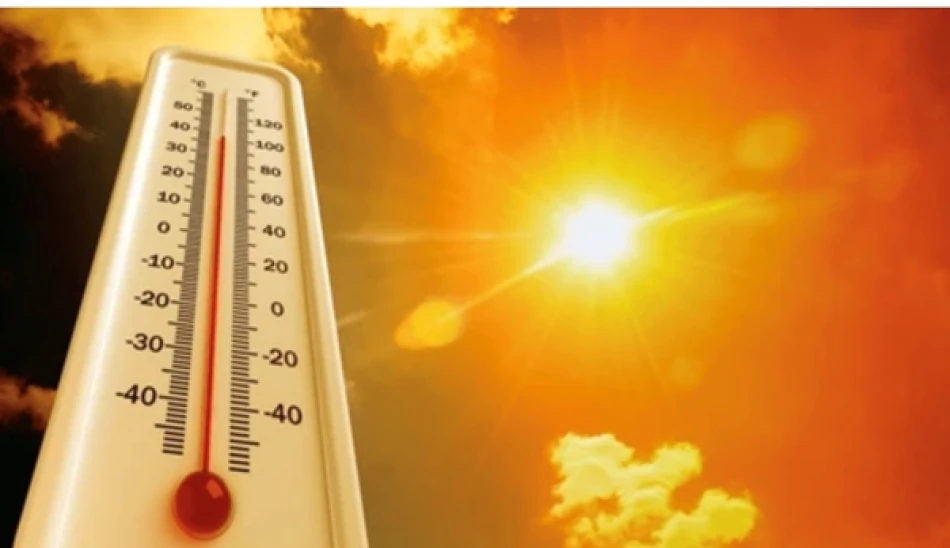
Japan Gripped by Intense Heatwave
Japan's Northern Island Shatters Heat Records as Climate Crisis Intensifies
Hokkaido, Japan's northernmost island traditionally known for its cool climate, recorded unprecedented temperatures on Wednesday, with eight cities breaking heat records dating back to 1977. The extreme weather event forced authorities to issue nationwide heatstroke warnings and open emergency cooling centers, highlighting how climate change is transforming even Japan's coldest regions into dangerous heat zones.
Record-Breaking Temperatures Grip Japan's Cool North
The town of Bihoro registered a staggering 38.2°C (100.8°F) on Wednesday afternoon, marking one of eight cities and one district in Hokkaido that shattered temperature records since official data collection began nearly five decades ago. This extreme heat in a region where summer temperatures typically hover around 25°C represents a dramatic shift in Japan's climate patterns.
Local authorities scrambled to protect residents from the unprecedented conditions. "We are calling on residents to exercise extreme caution against heatstroke," said Ryo Nakashi, an official in the neighboring town of Kitami, which opened emergency cooling shelters specifically for residents without air conditioning systems.
Perfect Storm of Weather Conditions
Meteorological experts attributed the extreme temperatures to a convergence of factors: clear skies, hot air currents flowing from China, and warm, dry winds that created a heat dome effect over the island. This combination transformed Hokkaido's typically mild summer climate into a furnace that challenged the island's infrastructure and emergency response systems.
A Broader Climate Crisis Unfolds
Wednesday's temperature surge represents just the latest chapter in Japan's escalating battle with extreme heat. The current record holder for Hokkaido remains the city of Saroma, which hit 39.5°C in May 2019—a temperature that seemed anomalous at the time but now appears part of an accelerating trend.
Japan's Ministry of Environment issued heatstroke warnings covering vast portions of the archipelago, reflecting how extreme heat has evolved from a localized concern to a national emergency. The country experienced its hottest June on record this year, with average temperatures climbing 2.34°C above normal levels due to persistent high-pressure systems.
Breaking Records Becomes the New Normal
The summer of 2024 tied with 2023 as Japan's hottest on record, followed by the warmest autumn in 126 years of official temperature recordings. This pattern of consecutive record-breaking seasons suggests Japan has entered a new climate regime where extreme heat events are becoming routine rather than exceptional.
Economic and Social Implications
The transformation of Hokkaido's climate carries significant economic consequences for Japan's agricultural sector. The island serves as a crucial food production hub, particularly for crops that rely on cooler temperatures. Sustained extreme heat threatens rice yields, dairy production, and the region's famous potato harvests, potentially driving food prices higher across Japan.
Infrastructure strain also presents mounting challenges. Many buildings in Hokkaido were designed for cooler climates and lack adequate cooling systems, forcing expensive retrofits and emergency measures like the cooling centers deployed this week. Energy demand for air conditioning in previously temperate regions adds pressure to Japan's power grid during peak summer months.
Global Context of Extreme Heat
Japan's heat crisis mirrors extreme temperature events worldwide, from Europe's summer heat domes to record-breaking temperatures across Asia and North America. However, the rapid warming of traditionally cool regions like Hokkaido demonstrates how climate change is reshaping global weather patterns in ways that challenge existing infrastructure and emergency response systems.
The persistence of high-pressure systems driving Japan's extreme heat aligns with broader atmospheric changes scientists link to global warming. These weather patterns are becoming more frequent and intense, suggesting that record-breaking temperatures in unlikely locations like northern Japan may become increasingly common rather than exceptional events worthy of headlines.
 Layla Al Mansoori
Layla Al Mansoori







